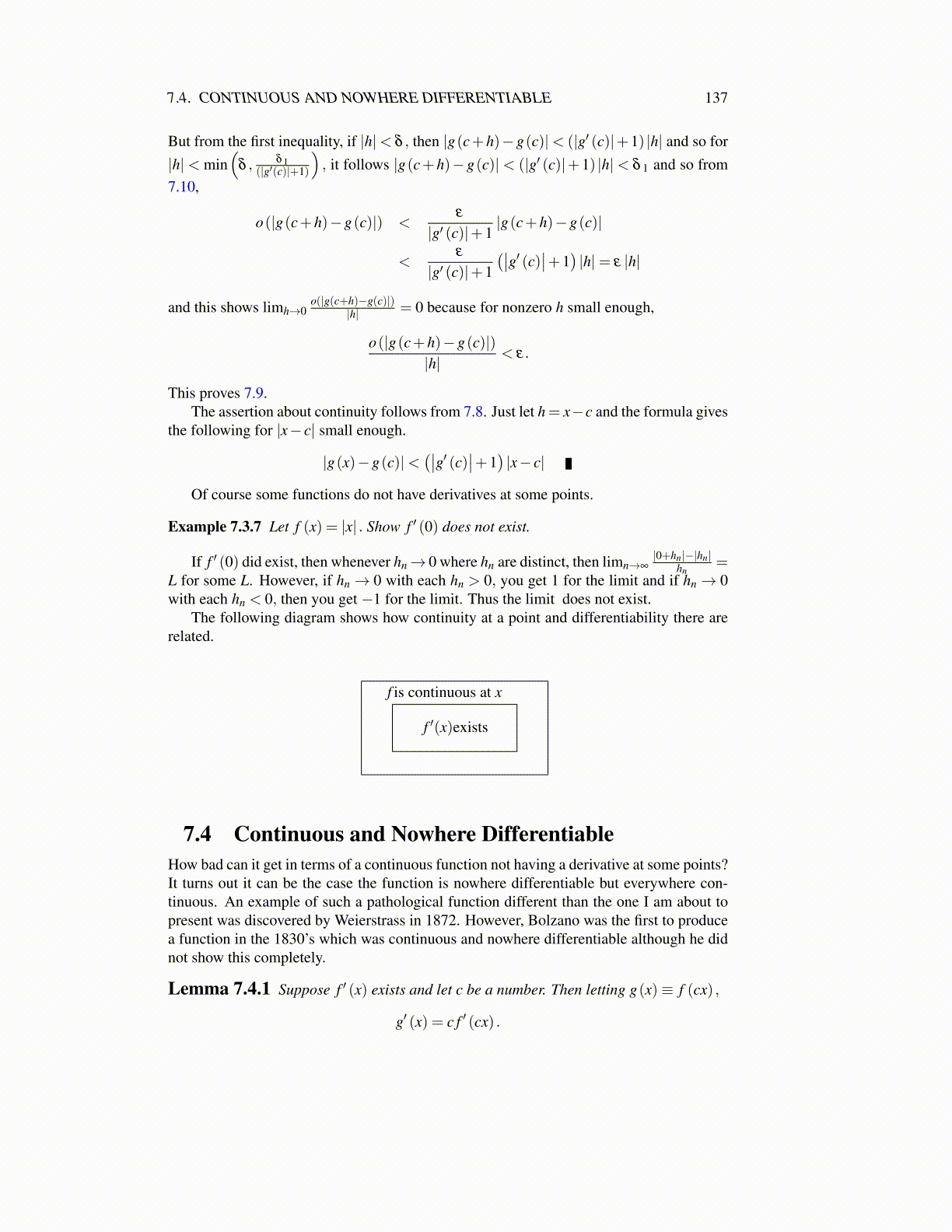
7.5. FINDING THE DERIVATIVE 137
Therefore,
g(x+δ m)−g(x)δ m
=1
δ m
m
∑k=0
(34
)k(f(
4k (x+δ m))− f
(4kx))
The absolute value of the last term in the sum is∣∣∣∣(34
)m
( f (4m (x+δ m))− f (4mx))∣∣∣∣
and we choose the sign of δ m such that both 4m (x+δ m) and 4mx are in some interval[k/2,(k+1)/2) which is certainly possible because the distance between these two pointsis 1/4 and such half open intervals include all of R. Thus, since f has slope ±1 on theinterval just mentioned,∣∣∣∣(3
4
)m
( f (4m (x+δ m))− f (4mx))∣∣∣∣= (3
4
)m
4m |δ m|= 3m |δ m|
As to the other terms, 0≤ f (x)≤ 1/2 and so∣∣∣∣∣m−1
∑k=0
(34
)k(f(
4k (x+δ m))− f
(4kx))∣∣∣∣∣≤ m−1
∑k=0
(34
)k
=1− (3/4)m
1/4= 4−4
(34
)m
Thus ∣∣∣∣g(x+δ m)−g(x)δ m
∣∣∣∣≥ 3m−(
4−4(
34
)m)≥ 3m−4
Since δ m → 0 as m→ ∞, g′ (x) does not exist because the difference quotients are notbounded.
This proves the following theorem.
Theorem 7.4.2 There exists a function defined on R which is continuous and boun-ded but fails to have a derivative at any point.
7.5 Finding the DerivativeObviously there need to be simple ways of finding the derivative when it exists. There arerules of derivatives which make finding the derivative very easy. In the following theorem,the derivative could refer to right or left derivatives as well as regular derivatives.
Theorem 7.5.1 Let a,b be numbers and suppose f ′ (t) and g′ (t) exist. Then thefollowing formulas are obtained.
(a f +bg)′ (t) = a f ′ (t)+bg′ (t) . (7.10)
( f g)′ (t) = f ′ (t)g(t)+ f (t)g′ (t) . (7.11)
The formula, 7.11 is referred to as the product rule.If f ′ (g(t)) exists and g′ (t) exists, then ( f ◦g)′ (t) also exists and
( f ◦g)′ (t) = f ′ (g(t))g′ (t) .